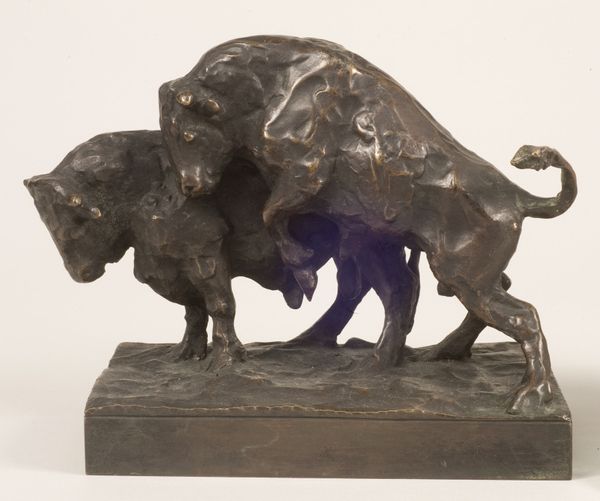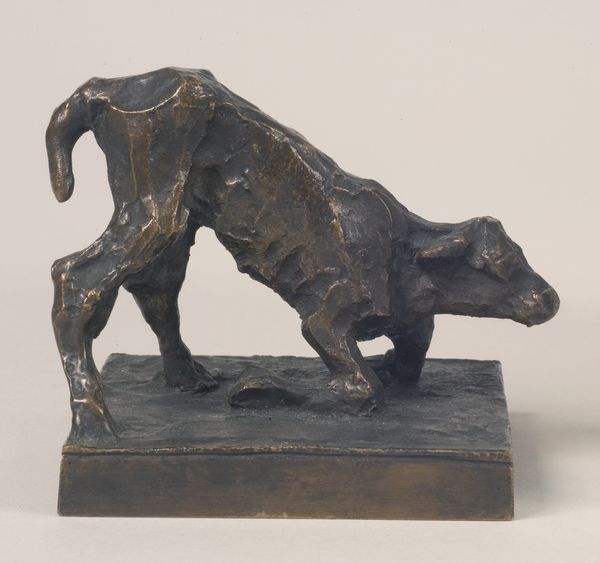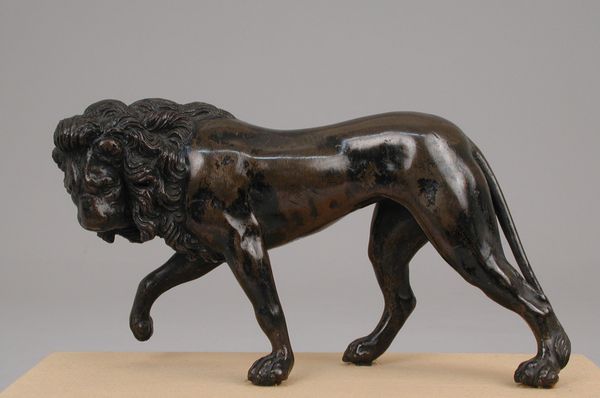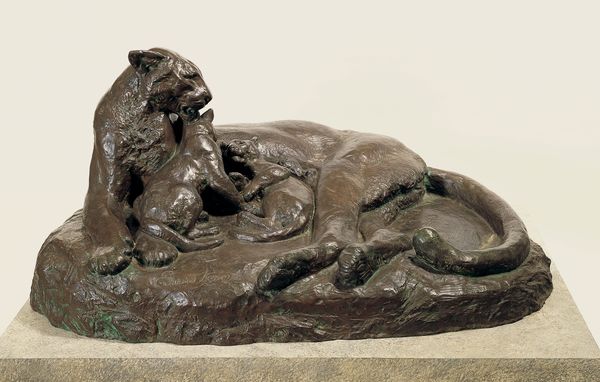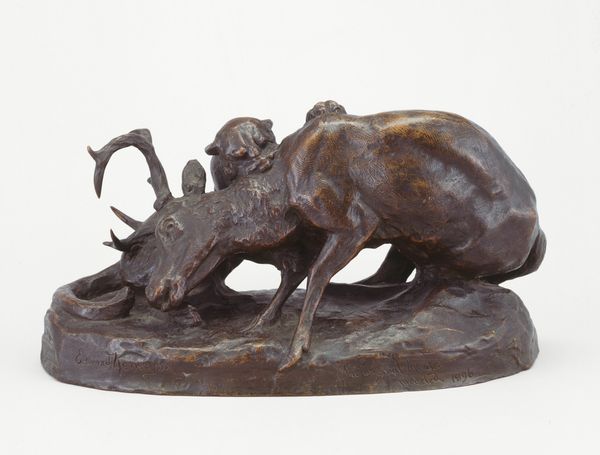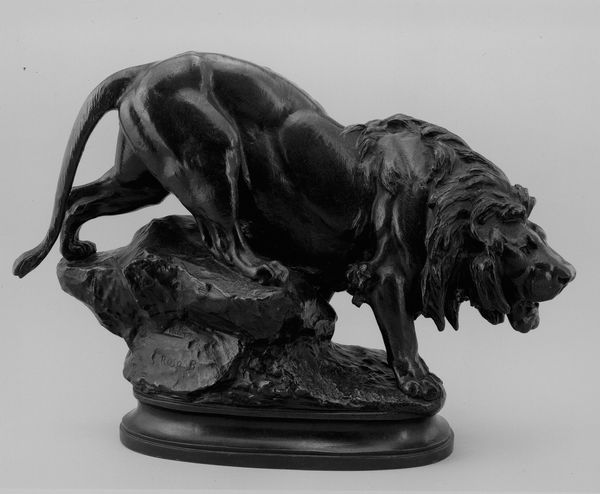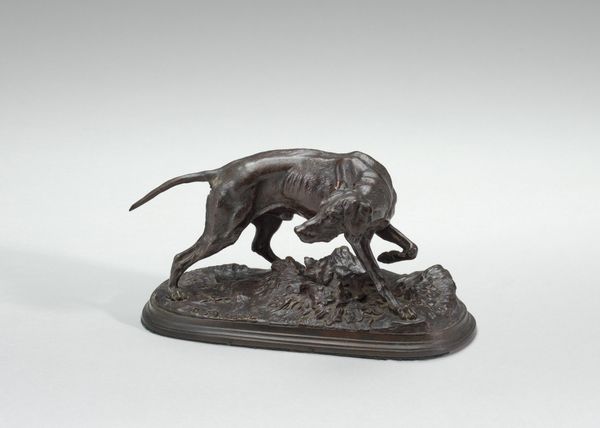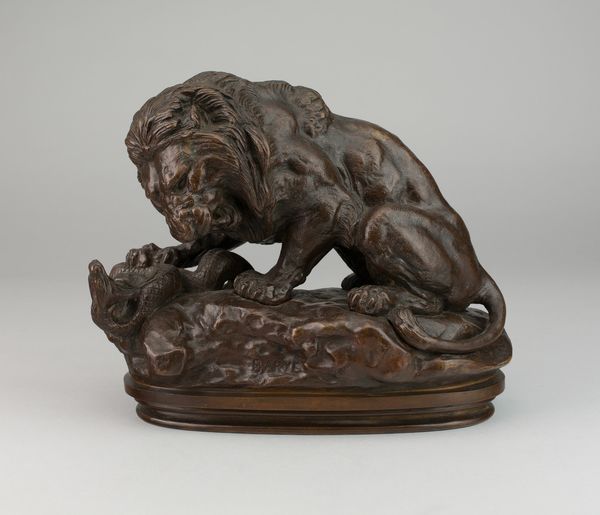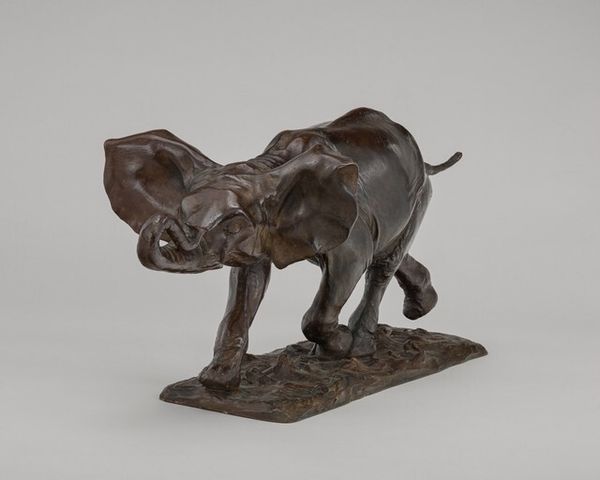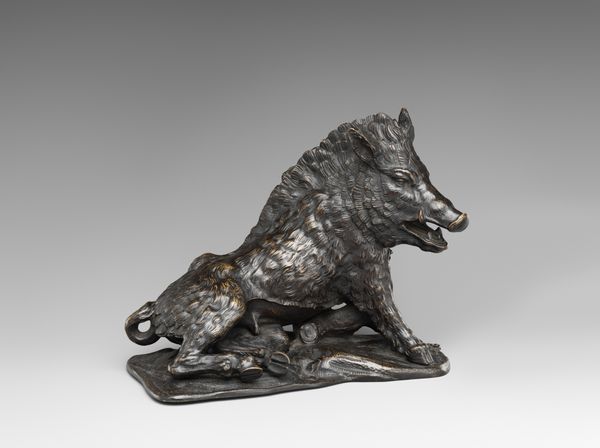
bronze, sculpture
#
sculpture
#
bronze
#
sculpture
#
academic-art
#
realism
Dimensions: 13 x 9 x 20 in. (33 x 22.9 x 50.8 cm)
Copyright: Public Domain
Curator: Edward Kemeys’ bronze sculpture "A Jaguar," created in 1885, captures the animal poised atop a rocky outcropping. What are your immediate impressions? Editor: Raw power and latent violence. The jaguar's crouch and open mouth – that's not just a display of aggression; it’s a declaration of dominance over its domain. I am struck by the energy he has managed to infuse in a still object. Curator: Indeed. Kemeys, unique among sculptors of his time, specialized almost exclusively in animals. He even studied anatomy, dissected carcasses, and observed animals in their natural habitats to achieve anatomical accuracy, which also reveals contemporary obsessions with naturalism and wildlife. How does the work participate in this socio-historical framework? Editor: Well, consider that late 19th-century fascination with the wild, fuelled by colonial exploration and resource extraction, conveniently overlooked indigenous people’s impact on ecological systems. Here, we observe what seems to be a realistic portrayal, but there may be colonial exploitation. Are we glorifying nature while erasing its complicated social realities? Curator: That’s a crucial point. By placing it in an art-historical perspective, Kemeys' work embodies a complex intersection of scientific interest, artistic license, and romanticization of nature prevalent during that era. Kemeys made several versions of this, each of which are very similar, what do you take of the reproducibility of a seemingly organic and ‘unique’ subject? Editor: Right, there’s an uneasy tension between our perception of nature, and the socio-political systems involved in the jaguar’s portrayal. And I must add – if you consider who usually had access to bronze sculpture like this – wealthy white landowners and industrialists, you see that this also reflects colonial dynamics related to controlling narratives about wildlife. Curator: It also reflects that there were growing conservation efforts. Perhaps a hope that the jaguar may be conserved? Editor: That's certainly a reading we should allow. Ultimately, Kemeys offers us this very vivid depiction of the jaguar and that prompts us to explore not just its physical form but its complicated existence in history, even to this day. Curator: Very well said. Examining "A Jaguar," the piece reveals its inherent complexity. It showcases a dedication to anatomical study, aesthetic pursuit, and cultural commentary all working in tandem. Thank you.
Comments
No comments
Be the first to comment and join the conversation on the ultimate creative platform.


